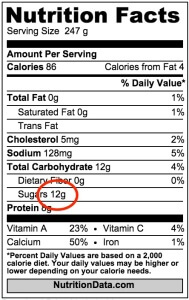

In the past, whole milk was considered unhealthy because of its saturated fat content, but recent research does not fully support this recommendation. There is emerging experimental data to indicate that eating moderate amounts of saturated fat does not directly cause heart disease ( 14, 15). In recent years, this recommendation has been called into question. For this reason, the guidelines recommend consuming only low fat or skim milk ( 4, 13). As a result, official guidelines instructed people to reduce their saturated fat intake ( 12).Ī cup (237 mL) of whole milk contains 4.5 grams of saturated fat, which is about 20% of the daily amount recommended by the 2020-2025 Dietary Guidelines for Americans. In the 1970s, public policy was adopted based on this assumed connection between saturated fat and heart disease. However, there was no experimental evidence to prove that this was true ( 12, 13). Mainstream nutrition recommendations advise limiting saturated fat because it can increase cholesterol levels, which is a risk factor for heart disease ( 11).īased on this information, experts made the assumption that saturated fat must increase the risk of heart disease.

Whole milk contains more fat and calories than skim milk.įor years, nutrition guidelines have been instructing people to avoid whole milk, mainly due to its saturated fat content. The major difference between the types of dairy milk available is fat content. So if you’re looking for higher omega-3s per serving, check to make sure you’re buying grass fed milk ( 8, 9, 10). However, this distinction is mostly seen in “grass-fed” milk, which is almost always organic anyway. The more fat a cup of milk has in it, the higher its omega-3 content ( 7 ).Īdditionally, studies have shown that organic whole milk contains an even higher amount of omega-3s than regular whole milk. However, because most milk manufacturers add vitamin D to milk, each variety generally contains a similar amount ( 6).Īnother significant nutritional difference between milk varieties is the amount of omega-3 fatty acids, a type of fat that has been linked to many health benefits, including improved heart and brain health, as well as lowered inflammation.

Though each type of milk contains a similar amount of micronutrients, the amount of vitamin D can differ slightly. If you order at a café, a sweetened Starbucks iced coffee contains 80 calories, and a Grande Starbucks latte has about 140 calories.Since fat contains more calories per serving than any other nutrient, milk with a higher fat content is higher in calories ( 5). Starbucks coffee can be a tasty breakfast treat or afternoon pick-me-up, but how many calories does it contain? If you brew a pot of Starbucks coffee and drink it black, you’ll find the same calories as any other black coffee - about 1 per 8-ounce cup. Starbucks Coffee Calories Image Credit: sirbusorin, Unsplash Take a look at this chart for more coffee creamer calorie information.Ħ. An ounce of almond milk contains only 3.75 calories! Looking for a low-calorie coffee creamer? A healthy coffee creamer might be made with almond milk or another alternative milk. You can even make your own - see the easy recipe here! An ounce of Coffee-Mate contains 40 calories, while an ounce of heavy cream contains 50 calories. There are many types of coffee creamers, and they’re readily available at grocery stores and online. Coffee Creamer Calories Image credit: Sarah Elizabeth, Unsplash


 0 kommentar(er)
0 kommentar(er)
